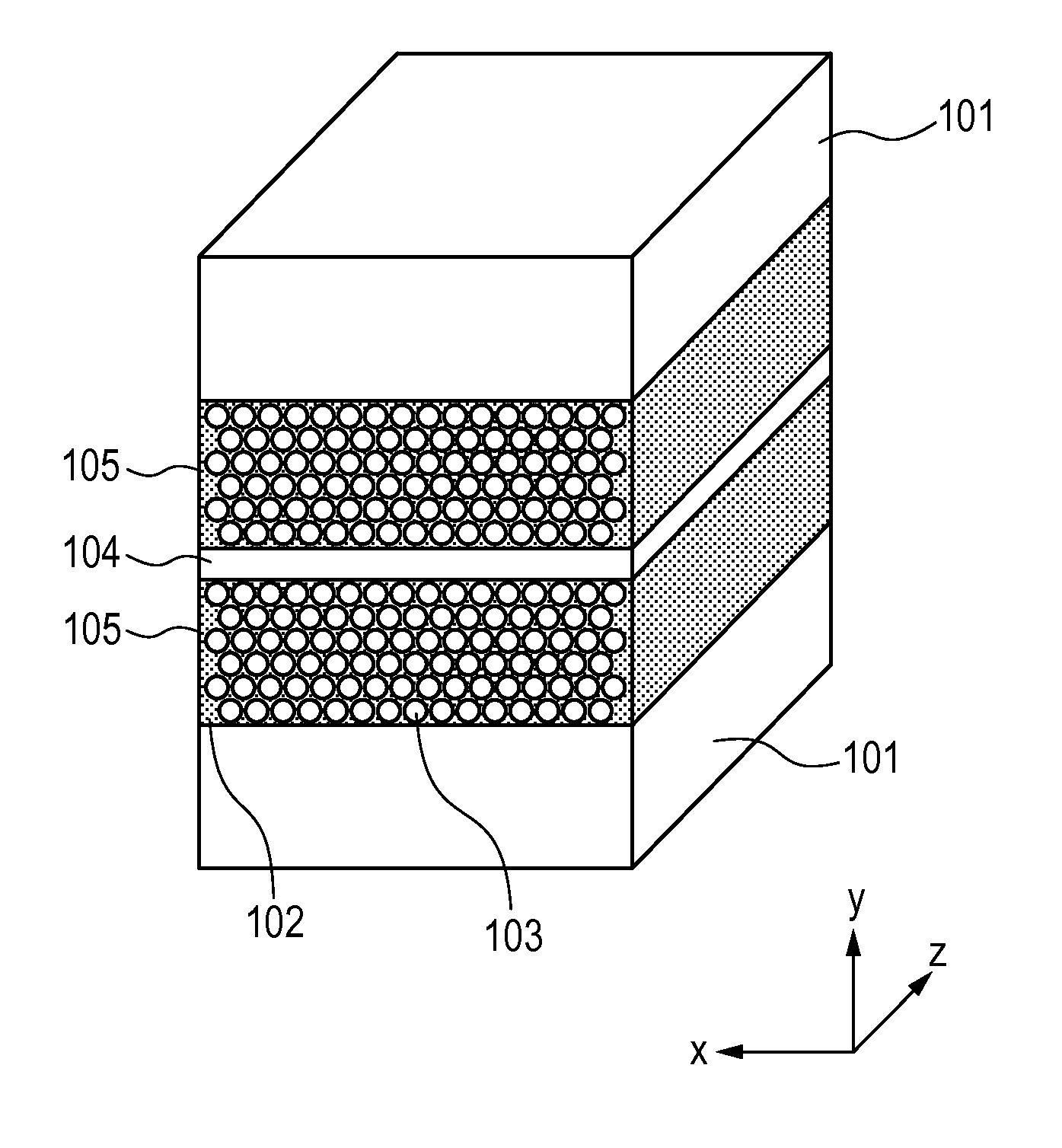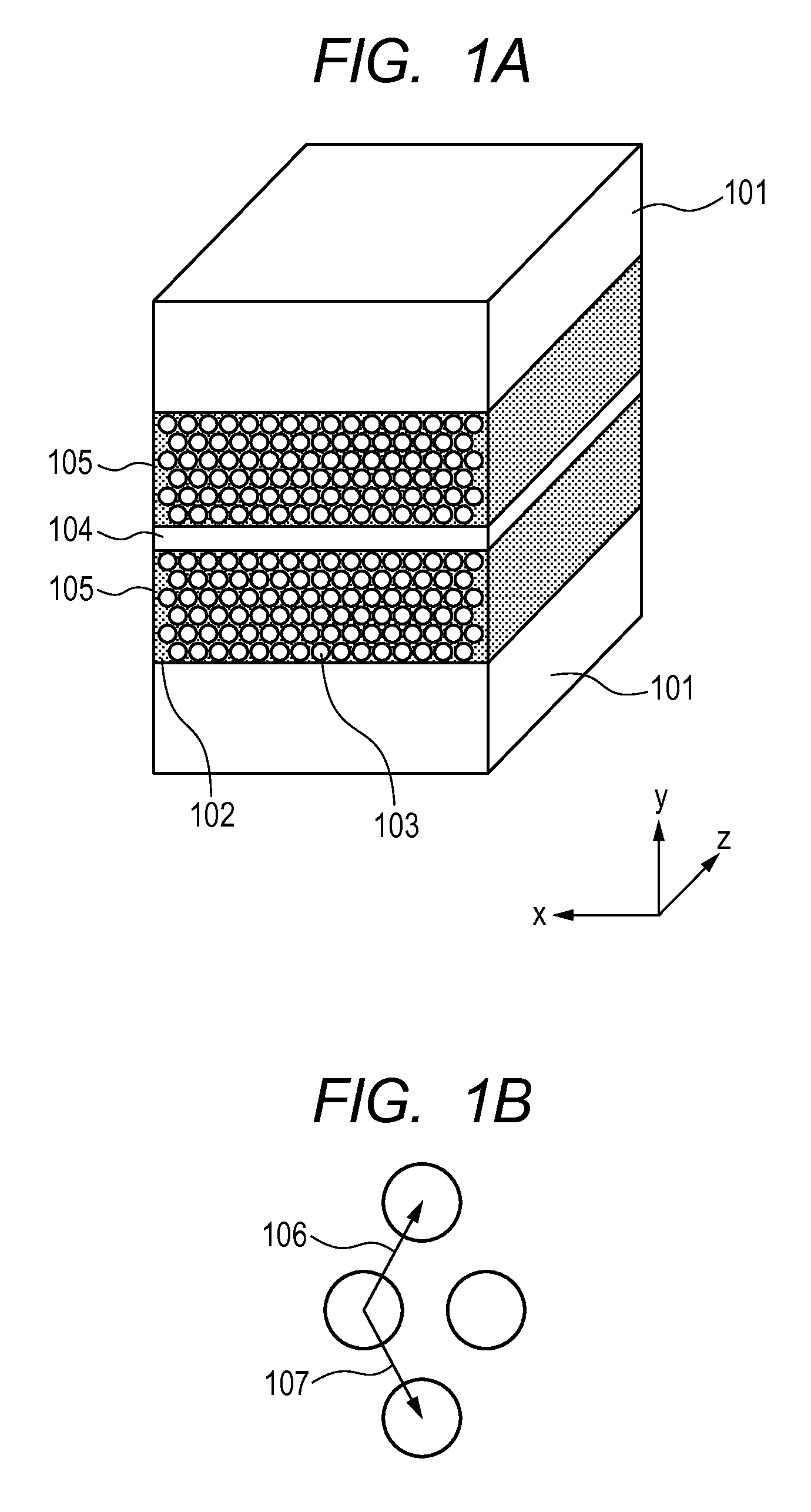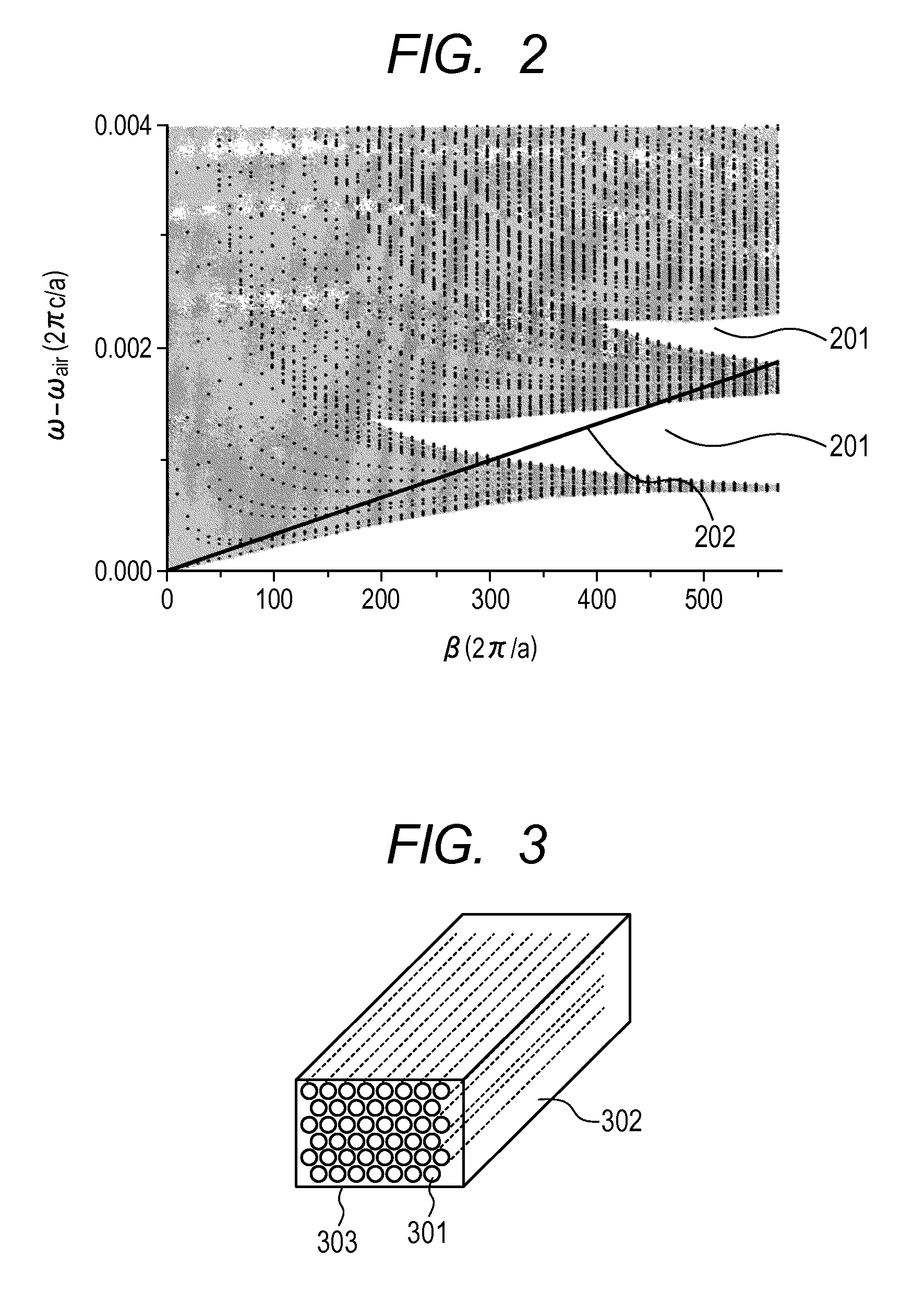X-ray waveguide
a waveguide and waveguide technology, applied in the field of x-ray waveguides, can solve the problems of narrow design range, difficult x-ray guide, limited material selectivity, etc., and achieve the effect of efficiently guiding an x-ray and high selectivity of its components
- Summary
- Abstract
- Description
- Claims
- Application Information
AI Technical Summary
Benefits of technology
Problems solved by technology
Method used
Image
Examples
example 1
[0039]In the present invention, the waveguiding direction of an X-ray to be guided is parallel to a z-axis in each figure in each of all examples. In other words, a wave vector equivalent to the propagation constant of a waveguide mode is identical in direction to the z-axis. Example 1 of the present invention is described with reference to FIGS. 1A and 1B. The X-ray waveguide illustrated in FIGS. 1A and 1B is obtained by sandwiching the core with claddings 105, which are each a mesoporous silica film formed on a Si substrate 101 and having a thickness of about 300 nm, so that a core 104 formed of polymethyl methacrylate (PMMA) may be interposed between the claddings.
[0040]Each of the claddings 105 as the mesoporous silica films is such that pores 103 of a surfactant as an organic material, the pores elongating in a z direction in FIGS. 1A and 1B and each having a radius of about 2 nm, form a triangular lattice periodic structure in SiO2 102 in an x-y plane. The period is about 5 nm...
example 2
[0042]FIG. 6 is a view illustrating Example 2 of the present invention. An X-ray waveguide of FIG. 6 is of the following shape. A cladding 703 is provided on an Si substrate 701, a core 702 is provided on the cladding 703, and further, a cladding 704 is provided on the core 702. In addition, the core 702 is interposed between the two claddings 703 and 704. The core is, for example, air. The cladding 703 is of the so-called artificial opal structure where polystyrene spheres each having a diameter of about 50 nm are arranged into a hexagonal close-packed structure in a self-organizing fashion on the substrate, and is of a three-dimensional periodic structure. The cladding 704 is formed of Ni. The Ni film of the cladding 704 has a real part of the refractive index of about 0.9999877410 for an X-ray having a photon energy of about 12 keV. In addition, the cladding 703 is formed of the styrene spheres each having a real part of the refractive index of about 0.9999965852 and polymethyl m...
example 3
[0044]FIG. 7 is a view illustrating Example 3 of the present invention. In this example, the core of the X-ray waveguide described in Example 1 is of a structure patterned in a two-dimensional plane, and the configuration except a core 804 and a spacer 805 is the same as that of Example 1.
[0045]In this example, in a forming process for the core, Ti 805 is formed on a mesoporous silica 806 as one cladding by sputtering so as to have a thickness of 50 nm, and then the core 804 having a width of about 200 nm and formed of air is formed by electron beam lithography and etching. Further, the mesoporous silica 806 produced on an Si substrate 801 is stuck onto the core. The mesoporous silica 806 is such that pores 803 of a surfactant as an organic material, the pores elongating in a z direction in FIG. 7 and each having a radius of about 2 nm, form a triangular lattice-like periodic structure in SiO2 802 in an x-y plane. As the core is patterned in the two-dimensional plane, an X-ray in th...
PUM
 Login to View More
Login to View More Abstract
Description
Claims
Application Information
 Login to View More
Login to View More - R&D
- Intellectual Property
- Life Sciences
- Materials
- Tech Scout
- Unparalleled Data Quality
- Higher Quality Content
- 60% Fewer Hallucinations
Browse by: Latest US Patents, China's latest patents, Technical Efficacy Thesaurus, Application Domain, Technology Topic, Popular Technical Reports.
© 2025 PatSnap. All rights reserved.Legal|Privacy policy|Modern Slavery Act Transparency Statement|Sitemap|About US| Contact US: help@patsnap.com



